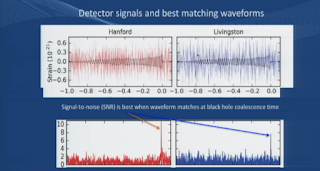No electromagnetic counterparts from optical wavelengths...
... to gamma ray ones
We present a search for an electromagnetic counterpart of the gravitational wave source GW151226. Using the Pan-STARRS1 telescope we mapped out 290 square degrees in the optical i_ps filter over a period starting 11.45hr after the LIGO information release (49.48hr after the GW trigger) and lasting for a further 28 days. We typically reached sensitivity limits of i_ps=20.3-20.8 and covered 26.5% of the LIGO probability skymap. We supplemented this with ATLAS survey data, reaching 31% of the probability region to shallower depths of m~19. We found 49 extragalactic transients (that are not obviously AGN), including a faint transient in a galaxy at 7Mpc (a luminous blue variable outburst) plus a rapidly decaying M-dwarf flare. Spectral classification of 20 other transient events showed them all to be supernovae. We found an unusual transient, PS15dpn, with an explosion date temporally coincident with GW151226 which evolved into a type Ibn supernova. The redshift of the transient is secure at z=0.1747 +/- 0.0001 and we find it unlikely to be linked, since the luminosity distance has a negligible probability of being consistent with that of GW151226. In the 290 square degrees surveyed we therefore do not find a likely counterpart. However we show that our survey strategy would be sensitive to Neutron Star-Nentron Star mergers producing kilonovae at D < 100 Mpc, which is promising for future LIGO/Virgo searches.
S. J. Smartt et al, (Submitted on 15 Jun 2016)
... to gamma ray ones
We present the Fermi Gamma-ray Burst Monitor (GBM) and Large Area Telescope (LAT) observations of the LIGO binary black hole merger event GW151226 and candi- date LVT151012. No candidate electromagnetic counterparts were detected by either the GBM or LAT. We present a detailed analysis of the GBM and LAT data over a range of timescales from seconds to years, using automated pipelines and new techniques for char- acterizing the upper limits across a large area of the sky. Due to the partial GBM and LAT coverage of the large LIGO localization regions at the trigger times for both events, differences in source distances and masses, as well as the uncertain degree to which emission from these sources could be beamed, these non-detections cannot be used to constrain the variety of theoretical models recently applied to explain the candidate GBM counterpart to GW150914.
J. L. Racusin et al, (Submitted on 15 Jun 2016)



